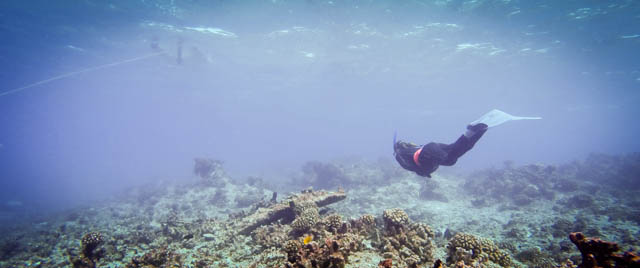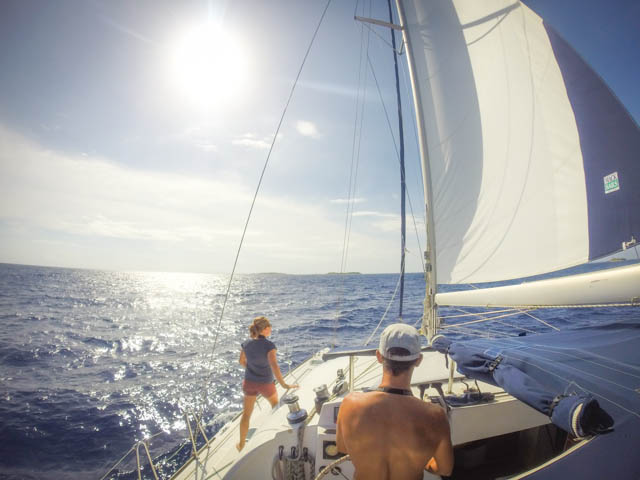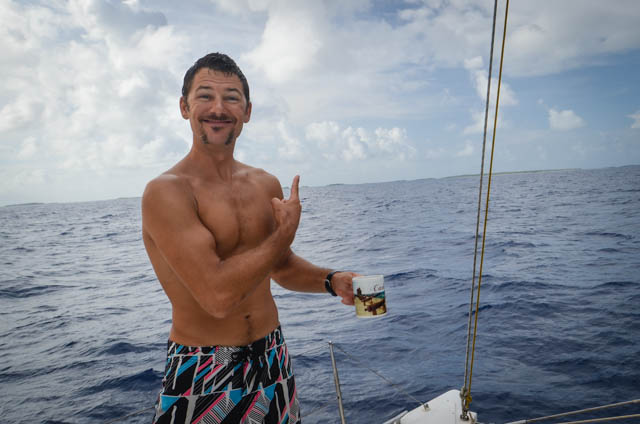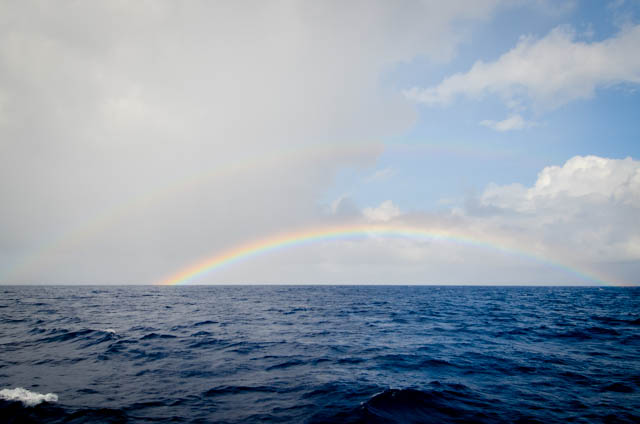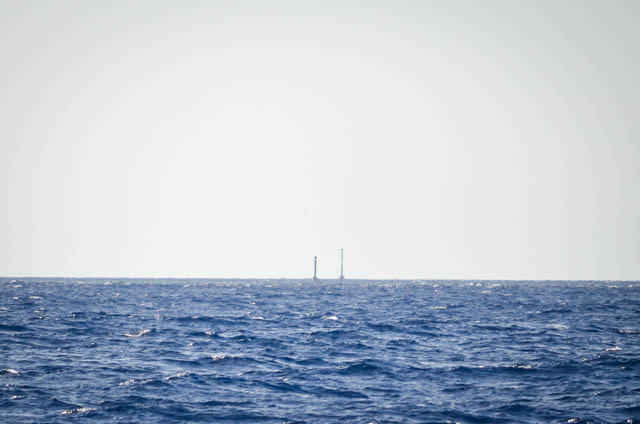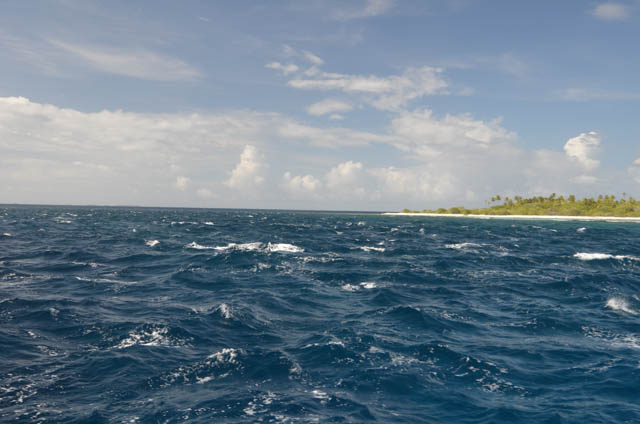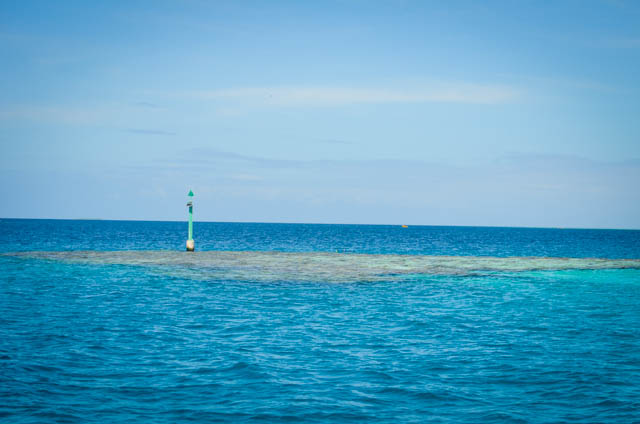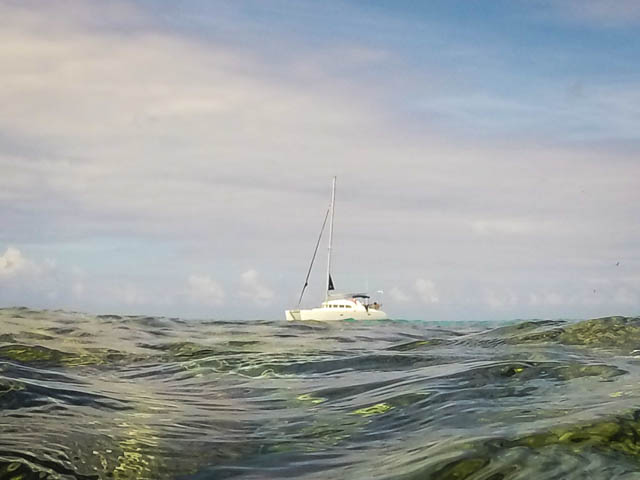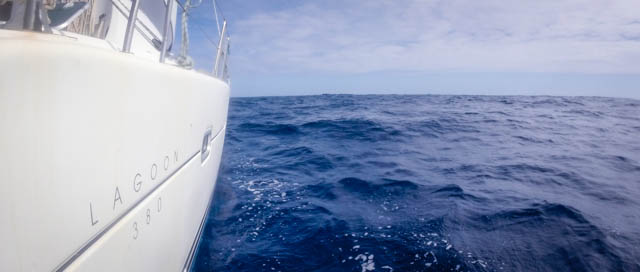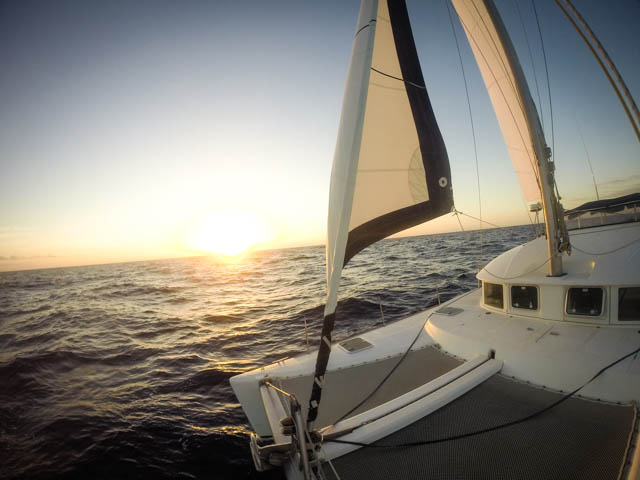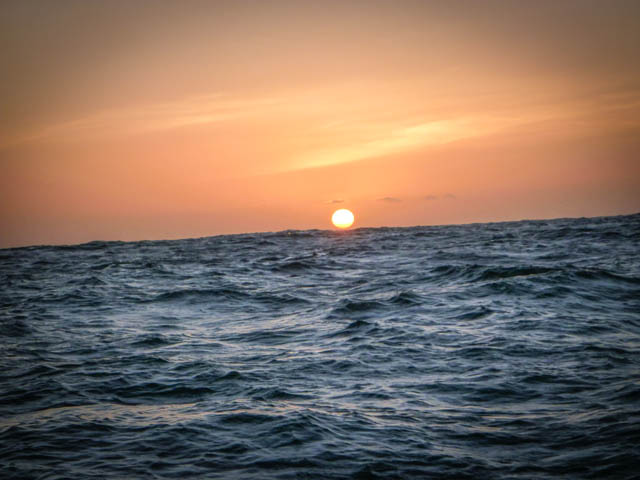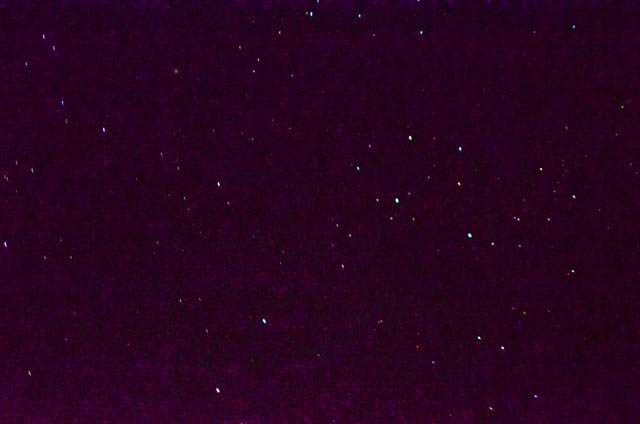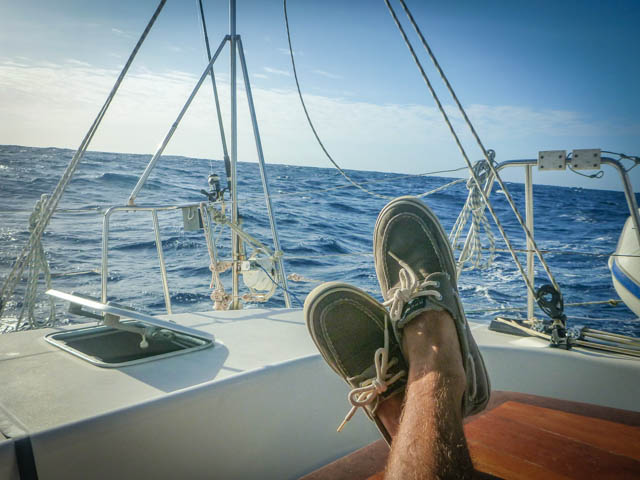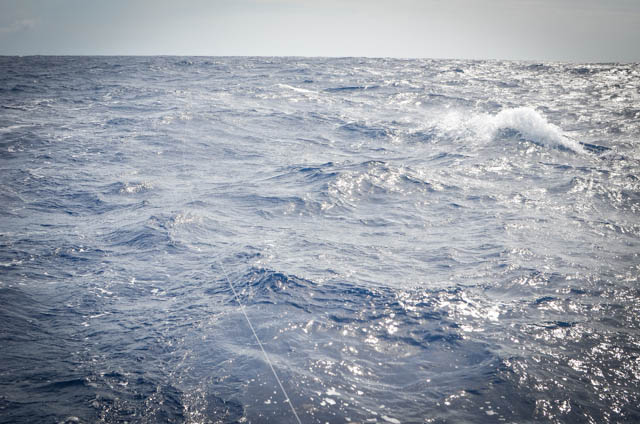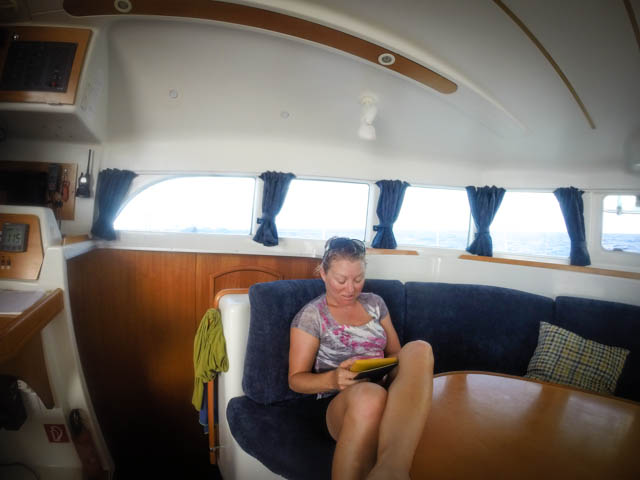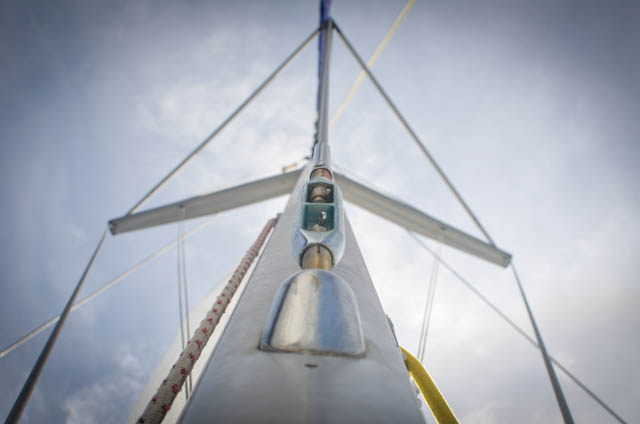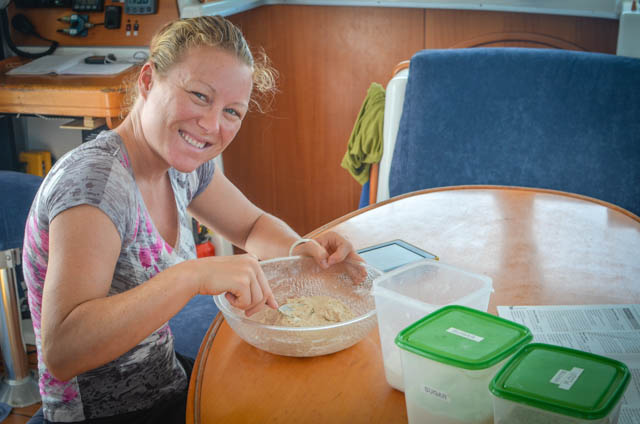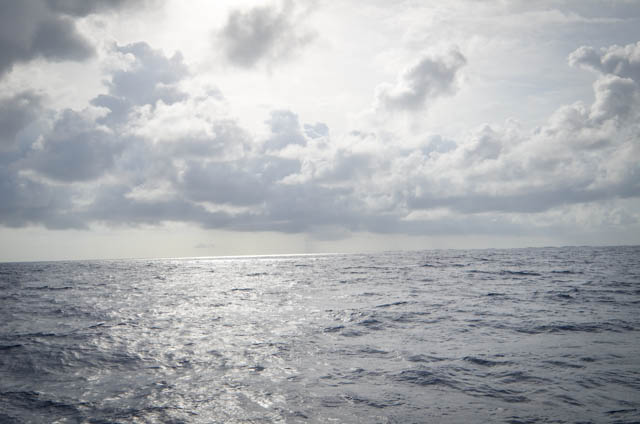Author: Pete
Location: Raroia, Tuamotus
Date: May 11th – 15th, 2015
May 11th: Spent a day around the town on Raroia. It’s an flat, open island with tall palms dropping toddler-sized coconuts and coral-rubble ground. A few streets crisscross the island, which takes about two minutes to walk across and ten minutes to walk the length of. Calling it ‘sleepy’ is an understatement of epic proportions. There’s a store, but it has no sign pointing to it and is in someone’s house on a dirt path off a side road. The locals are friendly, but not as ridiculously welcoming as the Marquesians. They pilot hand made wooden boats with the captain standing a hole in the bow deck, holding a joystick and throttle. They zoom up and down the motu, to where, we don’t know. On the north side of the motu there is a small pearl farm with Chinese workers who tend the myriad oyster cylinders, floated with white and red buoys.
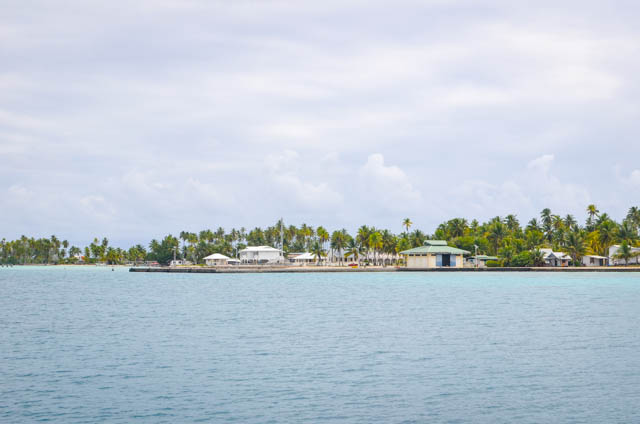
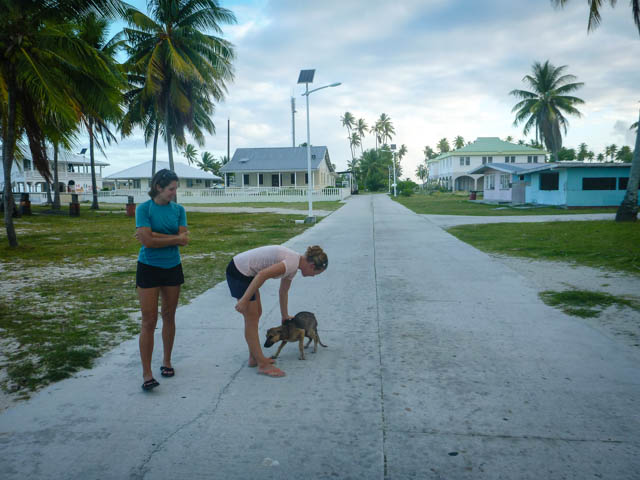

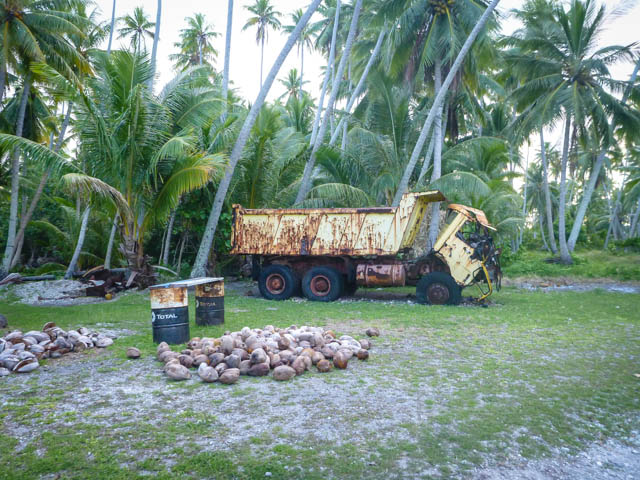
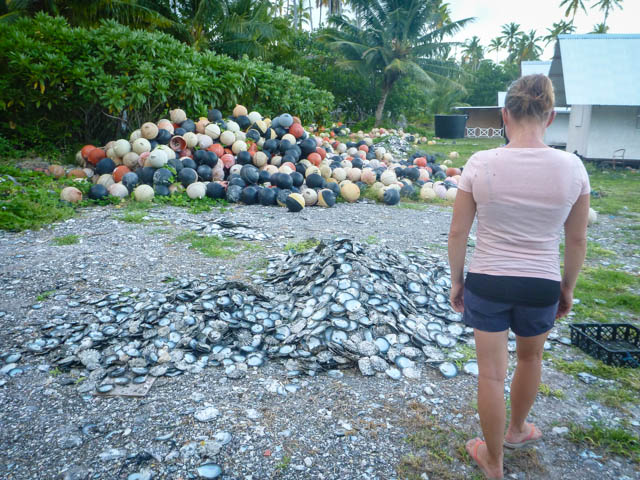
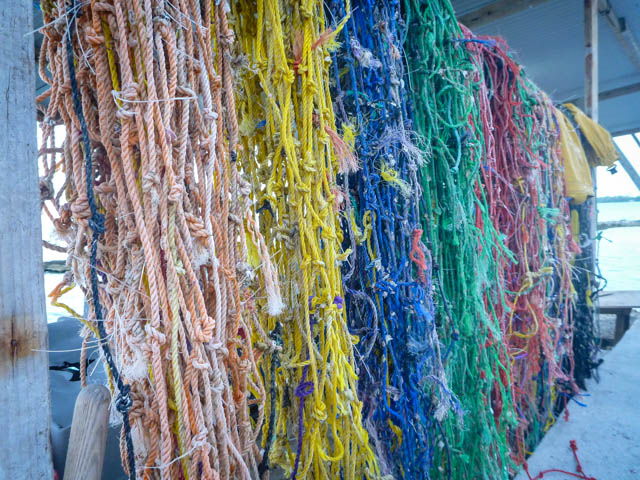
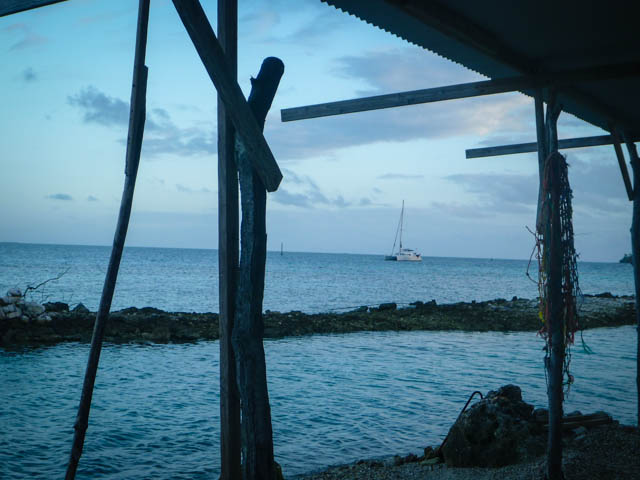
May 12: This morning was a treat. After breakfast of blueberry scones and papaya we took the dinghy back to the pass north of our anchorage and out towards the deep, open blue. We arrived purposefully just before slack water at high tide, so the current in the pass was still flowing into the lagoon. We motored to the outside of the pass in 10 feet of water, just before the knee-quivering, courage-shattering, drop off to two-thousand feet and splashed in.
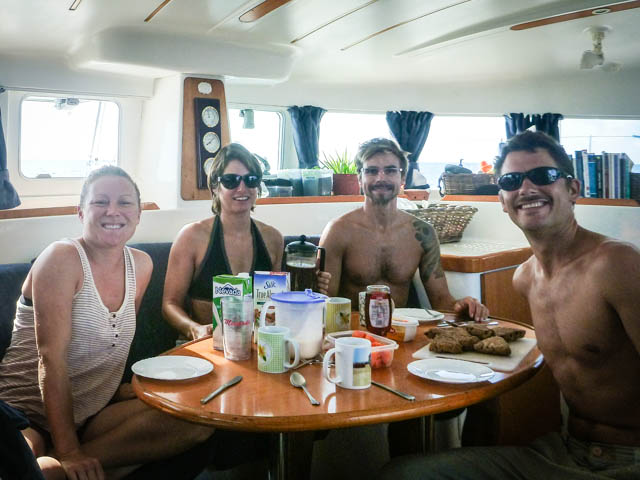
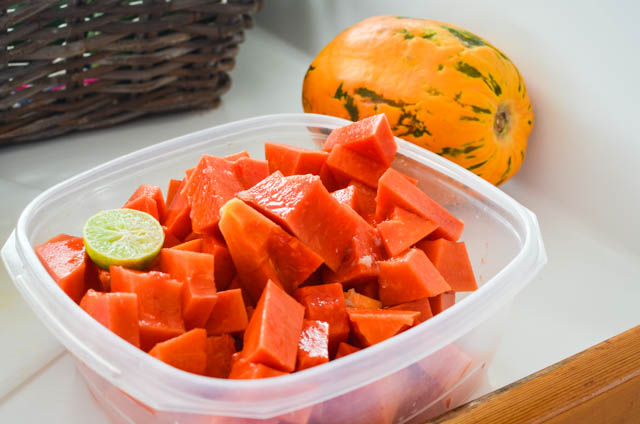
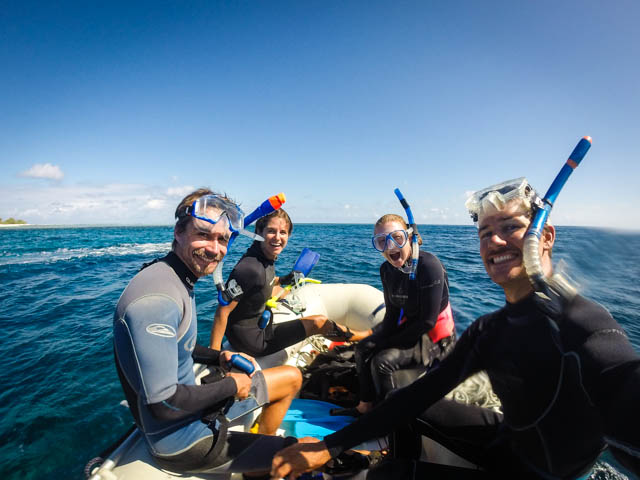
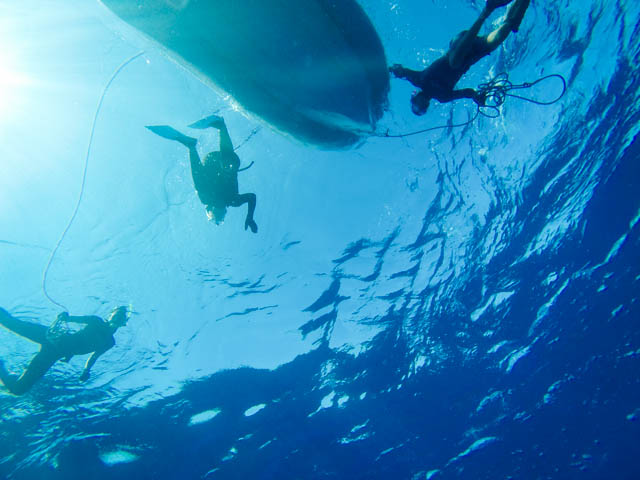
The visibility took your breath away and there was a collective gasp at the undulating coral, stretching as far as the eye could see. It almost gave me vertigo, the water was so clear, I felt like I should be falling. The current whisked us briskly back toward the lagoon. We screamed along, floating along side the dinghy. Someone each pass was in charge of holding on to the painter (bow line on dinghies). The others swooped along the bottom, arms out… it really was about as close to flight as it gets without an airplane, even coming from a couple of years of paragliding in Chile.

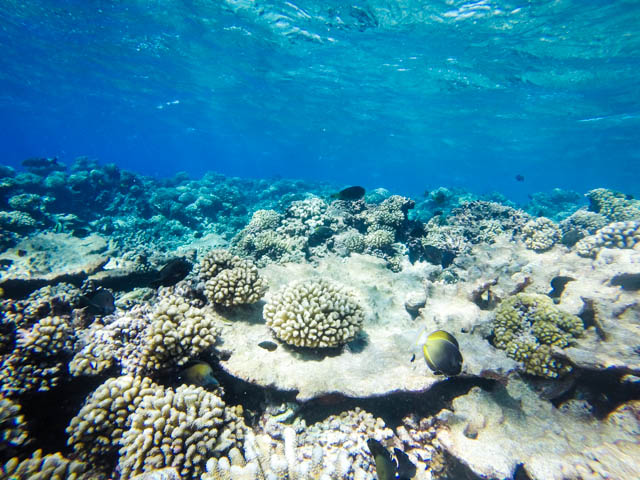
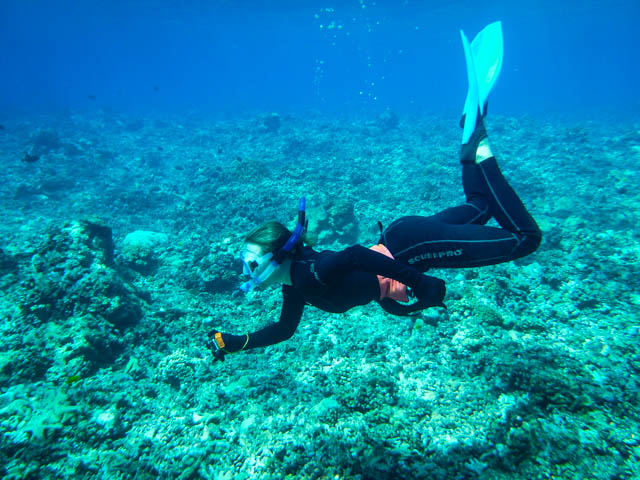
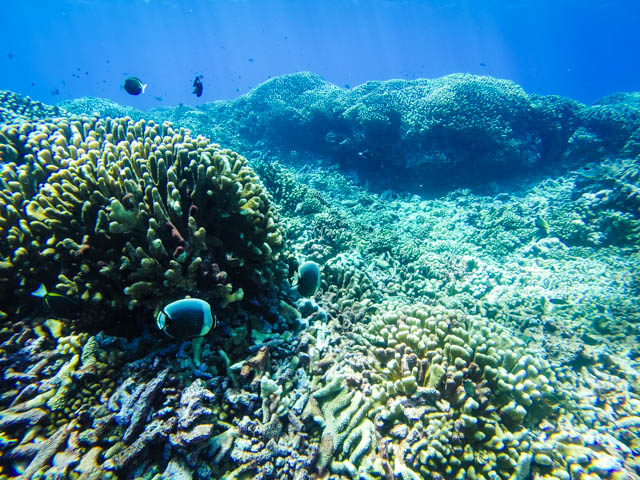
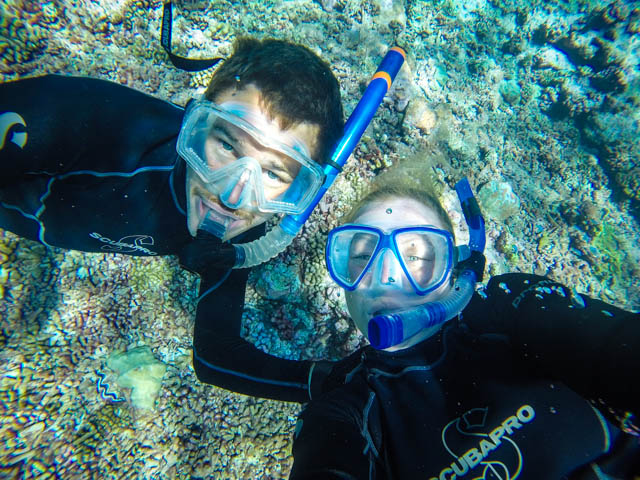
There were fish of all shapes and sizes. The swarthy Red Snapper, and the painted Emperor Triggerfish were highlights, but there were thousands and thousands of fish. It was incredible. Along with the fish there were sharks. Dozens of sharks. They were harmless and not too big, mostly Black and White Tip Reef Sharks. They cruised along with us, not coming too close. Maybe we’re getting desensitized to them. Or the lack of oxygen from the free diving is getting to our brains.
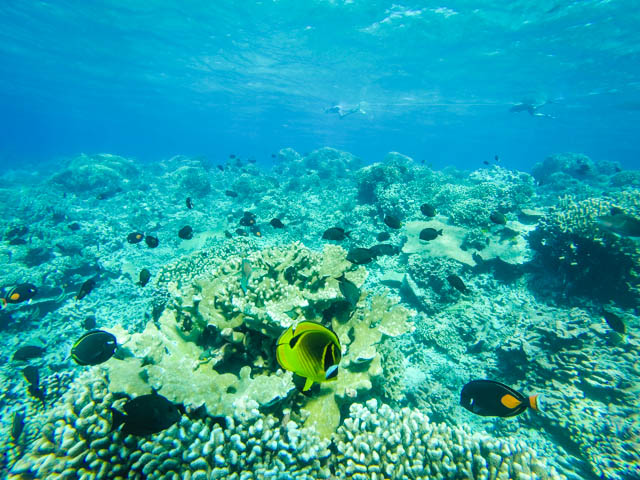
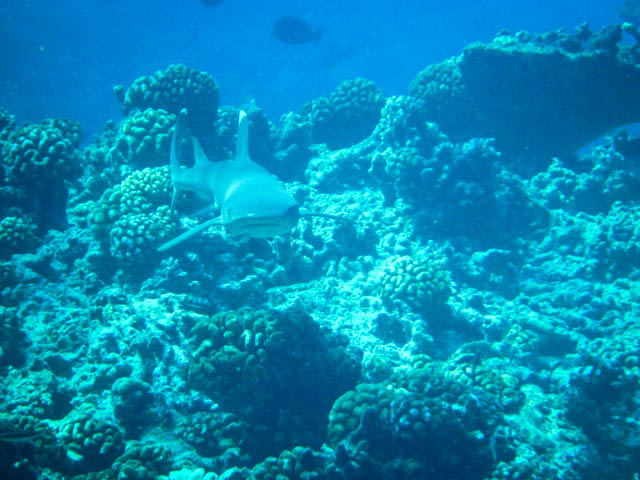
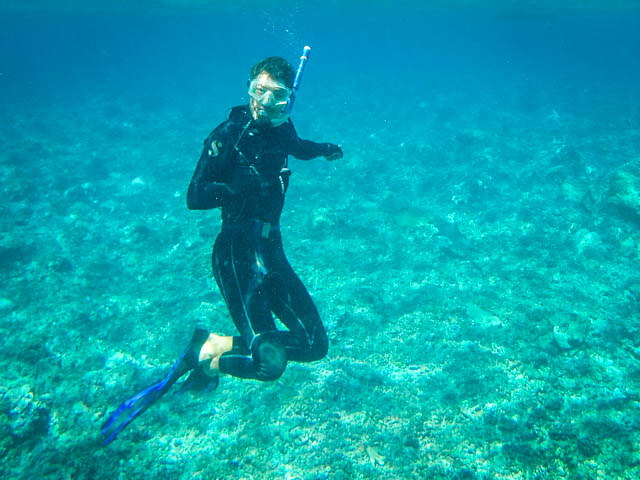
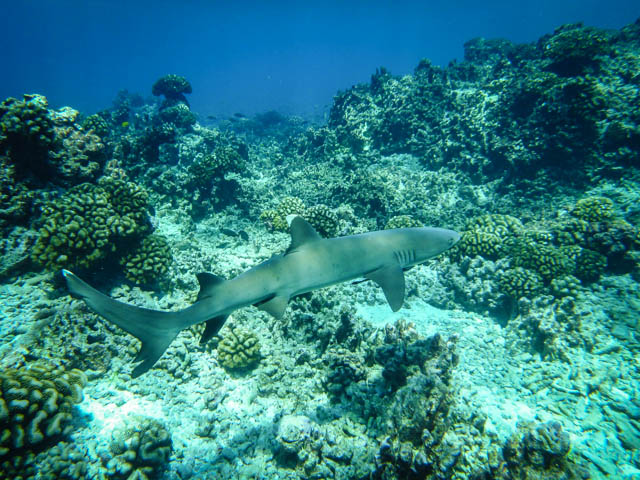
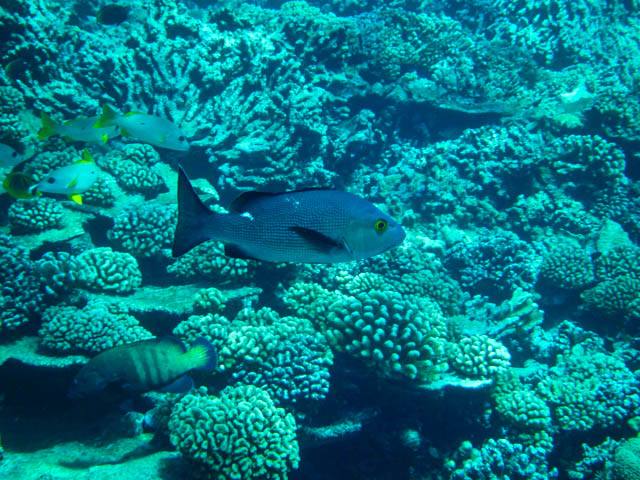
We must have made 8 or 9 laps, floating in, motoring out, each pass getting progressively slower, until we were at slack tide and the water was still. It only took about five minutes and the current reversed and started pulling us out to the deep blue. We headed back to Tayrona.
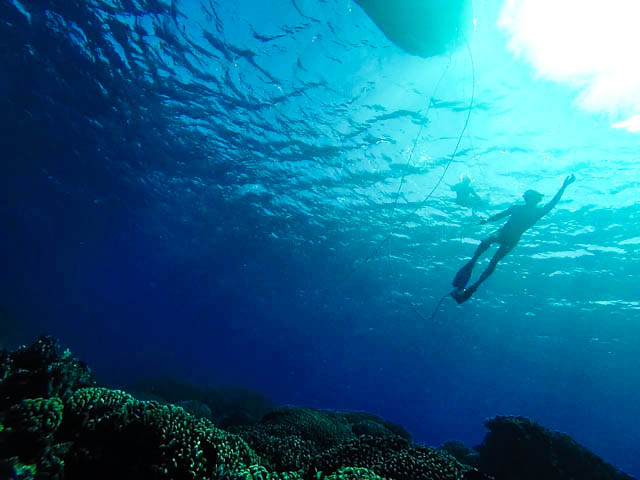
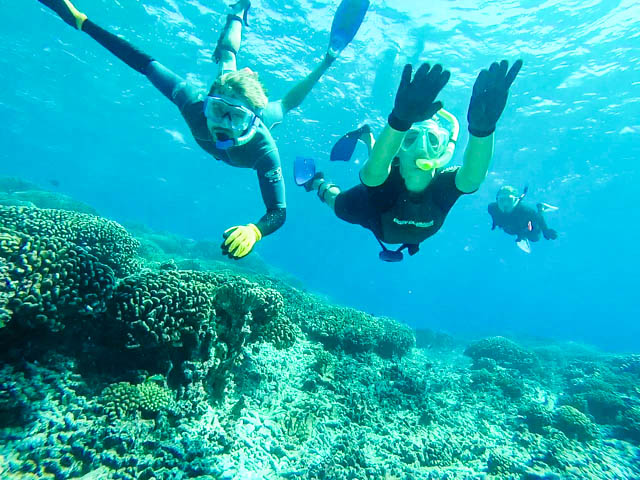
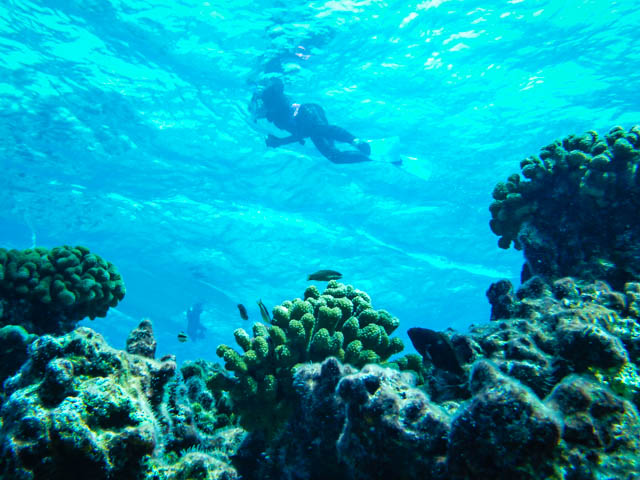
In the afternoon we pulled anchor and motored upwind to the pass, then turned east to cross the lagoon. There problem with these lagoons is they’re not surveyed, so we’re going in blind, but there’s a reward on the other side. The site where Thor Heyerdahl landed with the raft Kon-Tiki in 1947 proving it was possible for South American Incans to have settled French Polynesia. There’s a great movie recently made about it called Kon-Tiki about his 101 day float from Peru. Watch it! The sun was at our back and it was easy to dodge the coral heads rising up from 100 feet to just ankle-deep at the surface. They showed up pale yellow and green spots amidst the expanse of azure. We anchored off the Kon-Tiki island, the sun lighting up the sand and coral bottom. Speared two Camouflage Groupers in the afternoon and had them grilling by sunset.

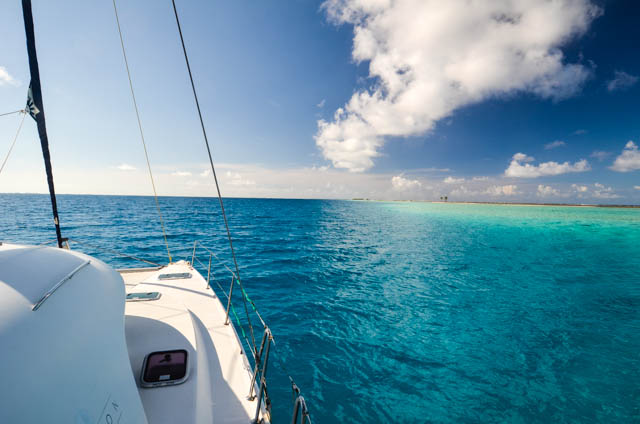
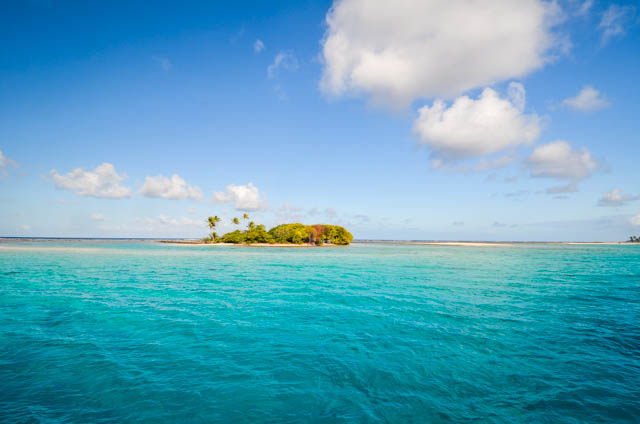
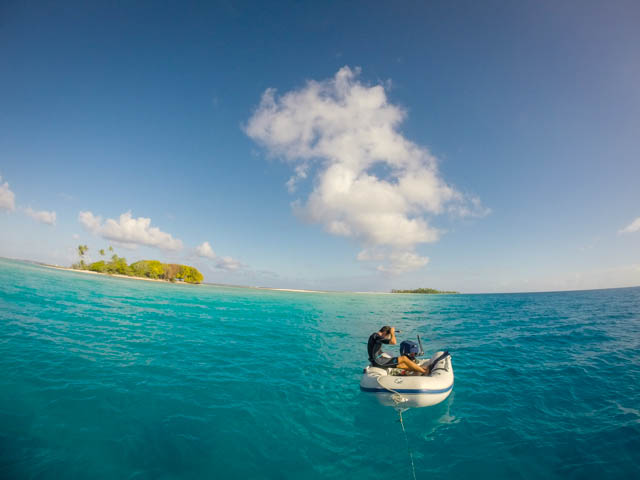
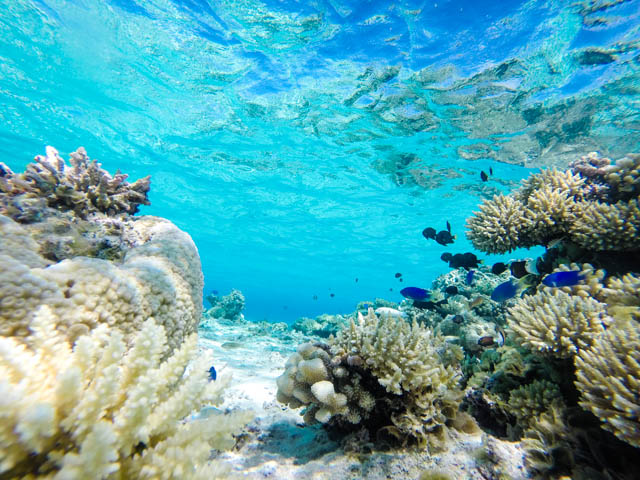
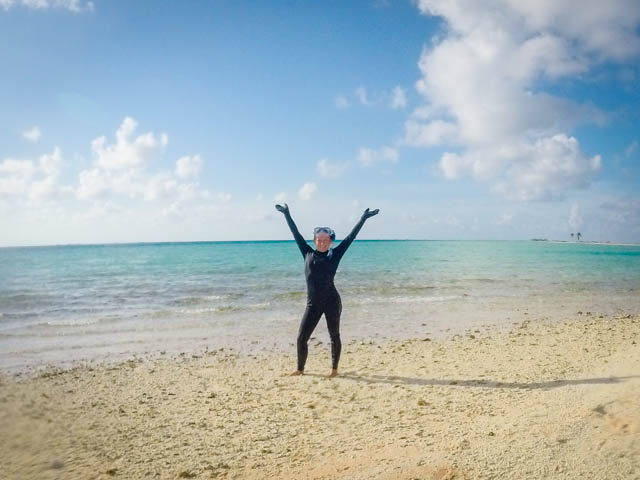
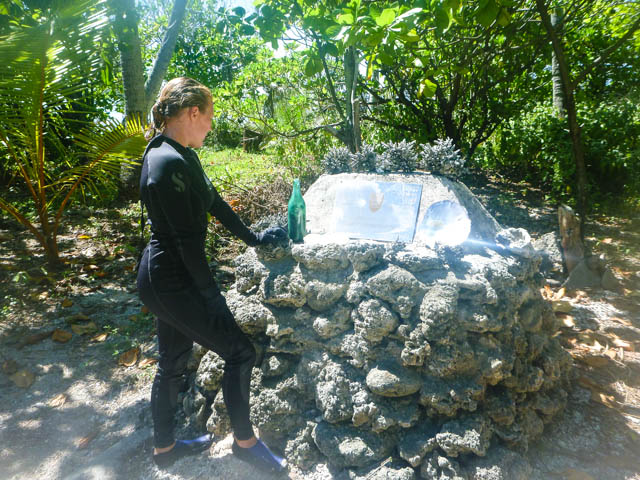
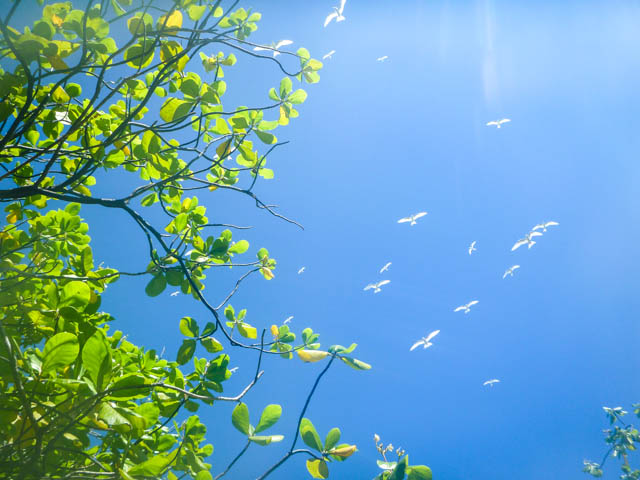
Now I’m writing on the trampoline in the absolute flat of the lagoon. The roar of the sea breaking on the reef a few hundred yards east of us is soothing and alarming at the same time. The stars and Mikly Way are the only lights, even across the pond. I love being this far out… I love it.
May 13: Spent the day jumping off the boat and snorkeling on the coral heads around the anchorage. The two boats from the Raroia anchorage came over and we made a bonfire on the tiny islet, facing the crashing reef. We cooked foil packets of potato, onions, carrots, and sausage right on the coals, then played guitar and harmonica into the night. Okay, until 9:00, but that’s really late for cruisers.
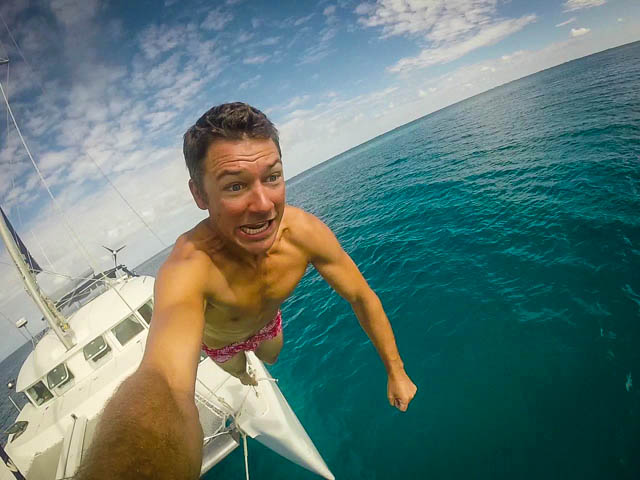
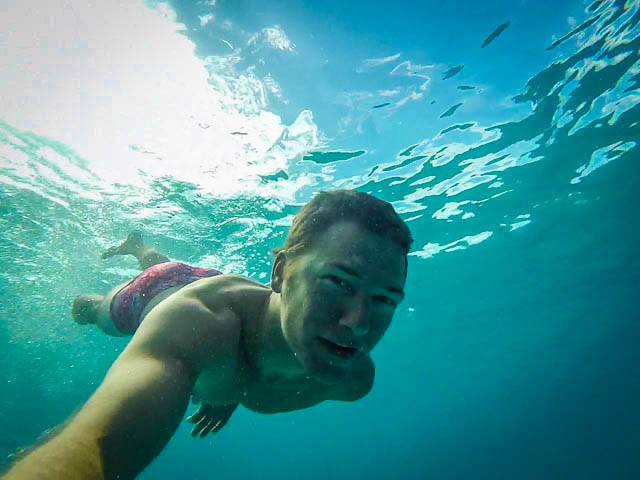
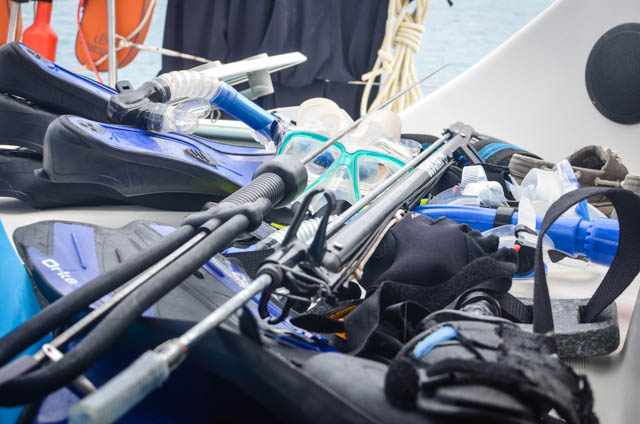
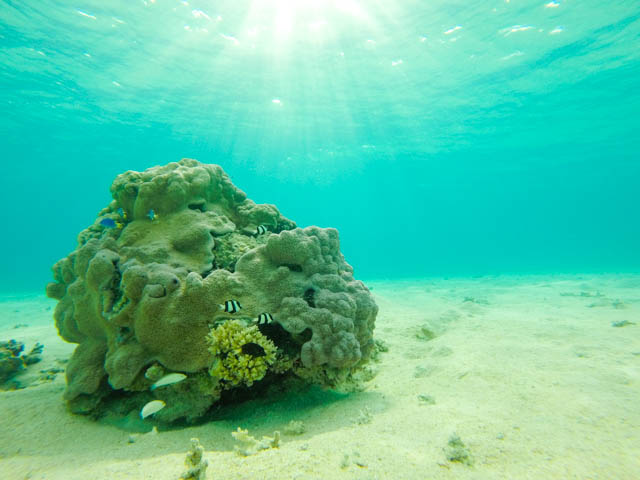
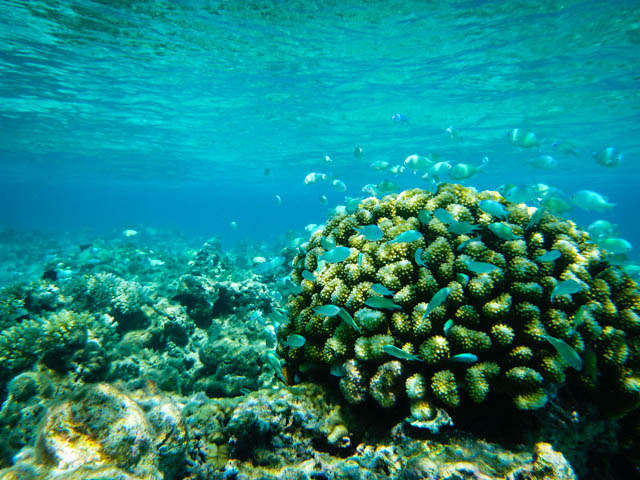
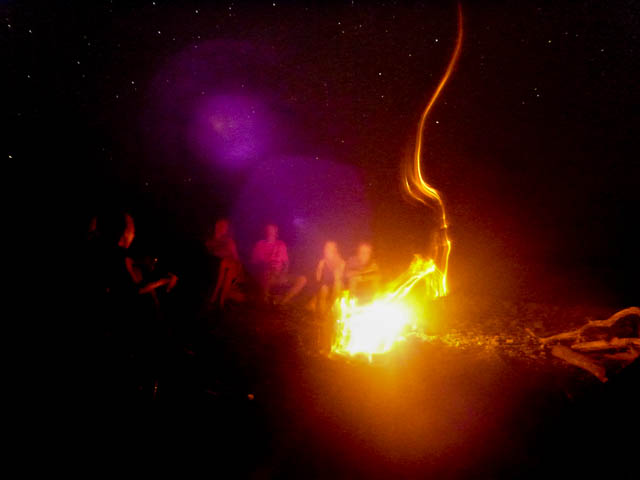
May 14: Moved a few islets north today, only about 4 miles to check out a great spit of land with one single palm tree on it. Reminded me of Gary Larson’s Far Side cartoons. More snorkeling. More sharks. This place is full of them! In the afternoon I walked around one of the un-named islands. The palm trees give way to coral rubble that extends towards the open sea. The water is calf-deep, and punctuated by coral boulders.
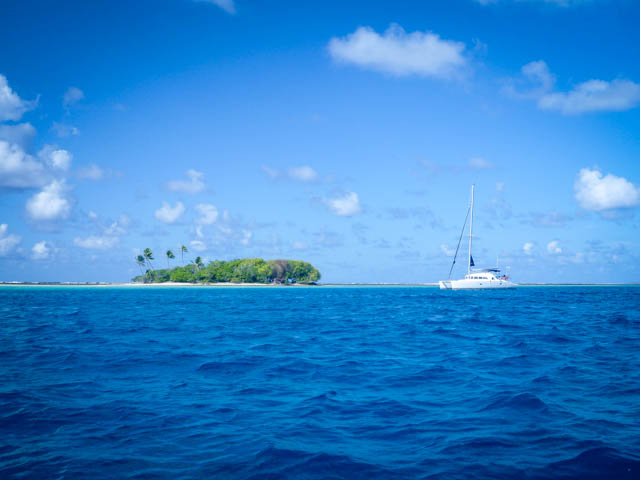

I walked out into the shallow water, watching the dark blue sea heave wave after wave upon the coral reef, some 200 meters out from the islet. I was almost out to the reef when a fast moving form came scooting in towards my feet, a black-tipped fin cutting the twelve inches of water. I hollered and jumped bravely onto one of the coral boulders, like a 1940’s housewife balking at a mouse. In my defense, this mouse was a black tip reef shark. And he wasn’t alone. Four little sharks, between two and three feet long, circled my little rock, attracted by the splashing sounds of my shoes in the water. They were almost cute, being so small, aside from the fact that they were SHARKS. The “duh-DUMP” music from Jaws played in my head as their fins weaved around. I threw a few stones at them, and they spooked and took off, but didn’t go too far. I dawned on me that I was playing the age-old kid’s game, Hot Lava, where you can stand on certain locations, but in between you’ll be melted, or in this case, eaten by tiny sharks. Fun! I courageously bounced from boulder to boulder, standing like a meerkat on each one looking for predators. I did make it out to the reef eventually. It’s incredible, the reef is bright Peptobisthmol pink and is pretty much level with the surface of the water, but drop off like a cliff into deep deep blue sea. The waves pummel the reef, and the energy is absorbed and the water returned to the sea through narrow, evenly spaced channels. Really neat. I played the Hot Lava game back to the island. Despite the sharkies the area was so neat I brought the rest of the crew back later to check it out.
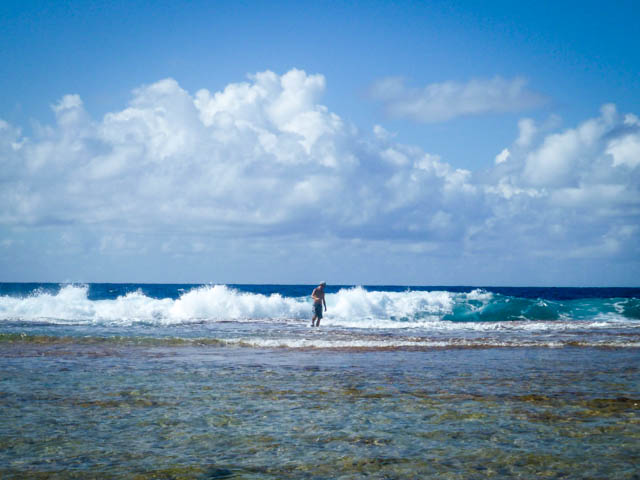
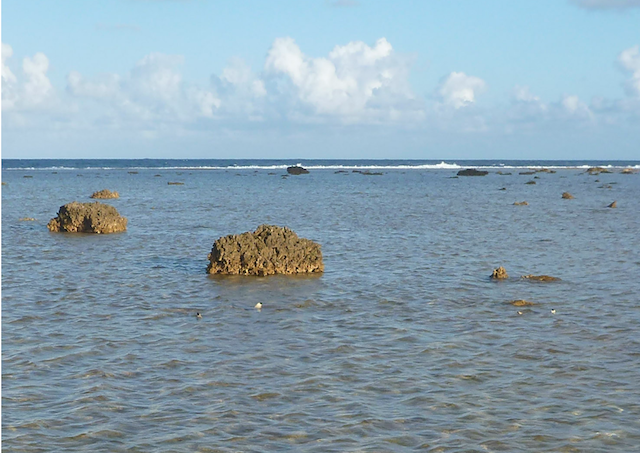
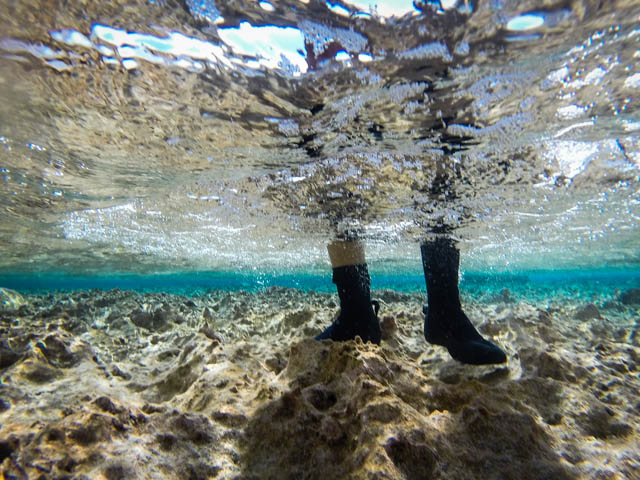
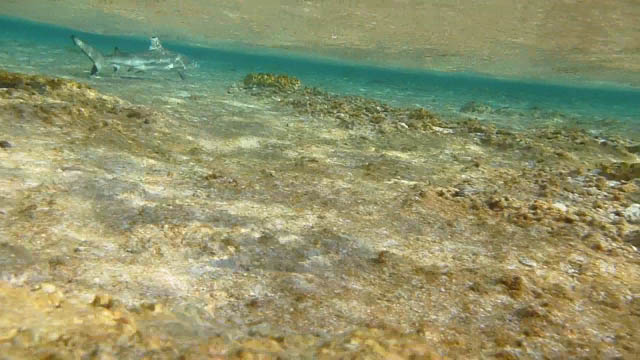
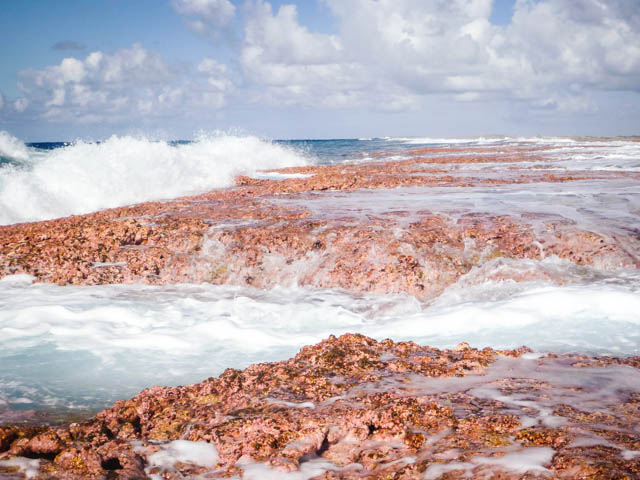
While I was traipsing around the the fishes, Miranda made Eggplant Parmesan for dinner and baked a cake for dessert! How’d I get so lucky?


